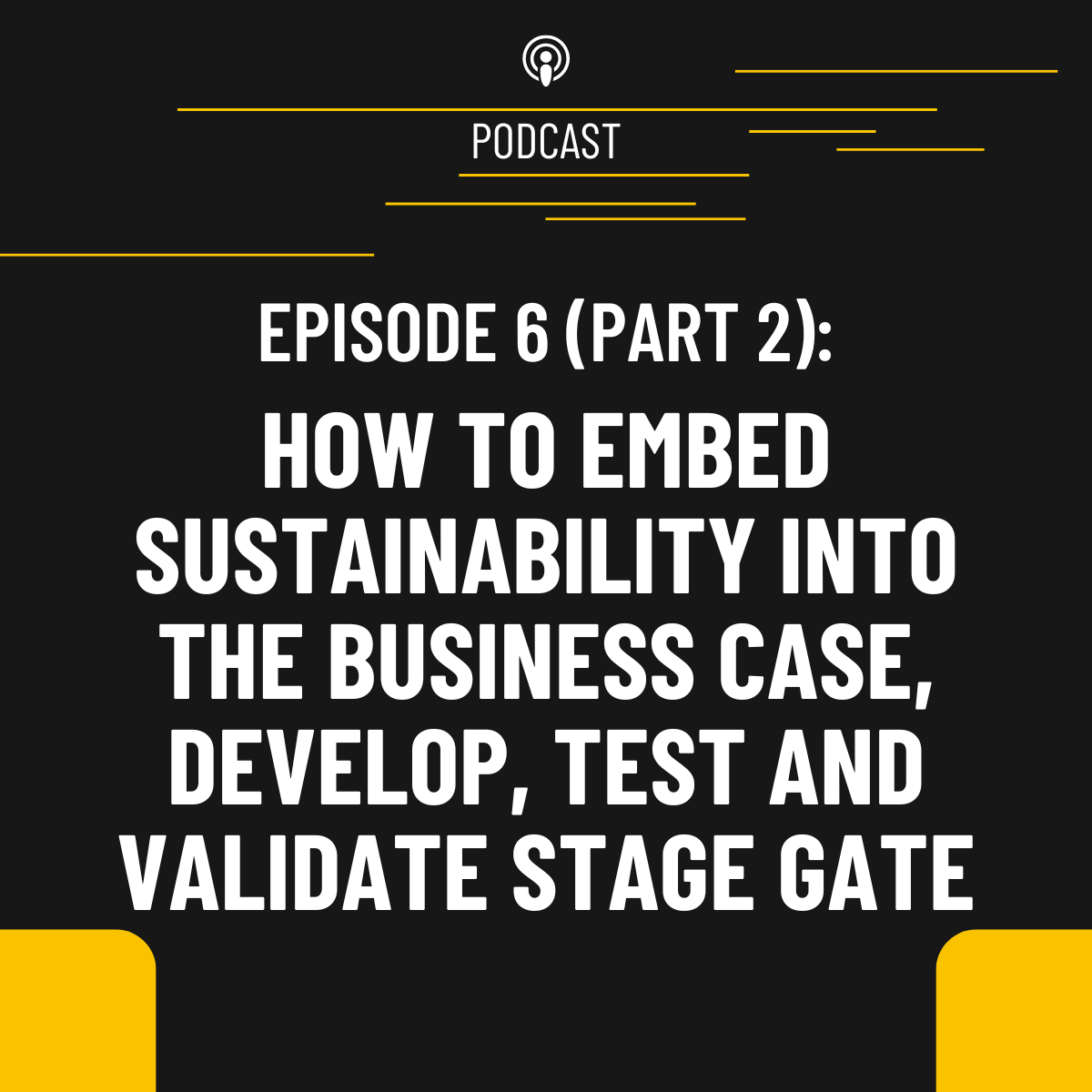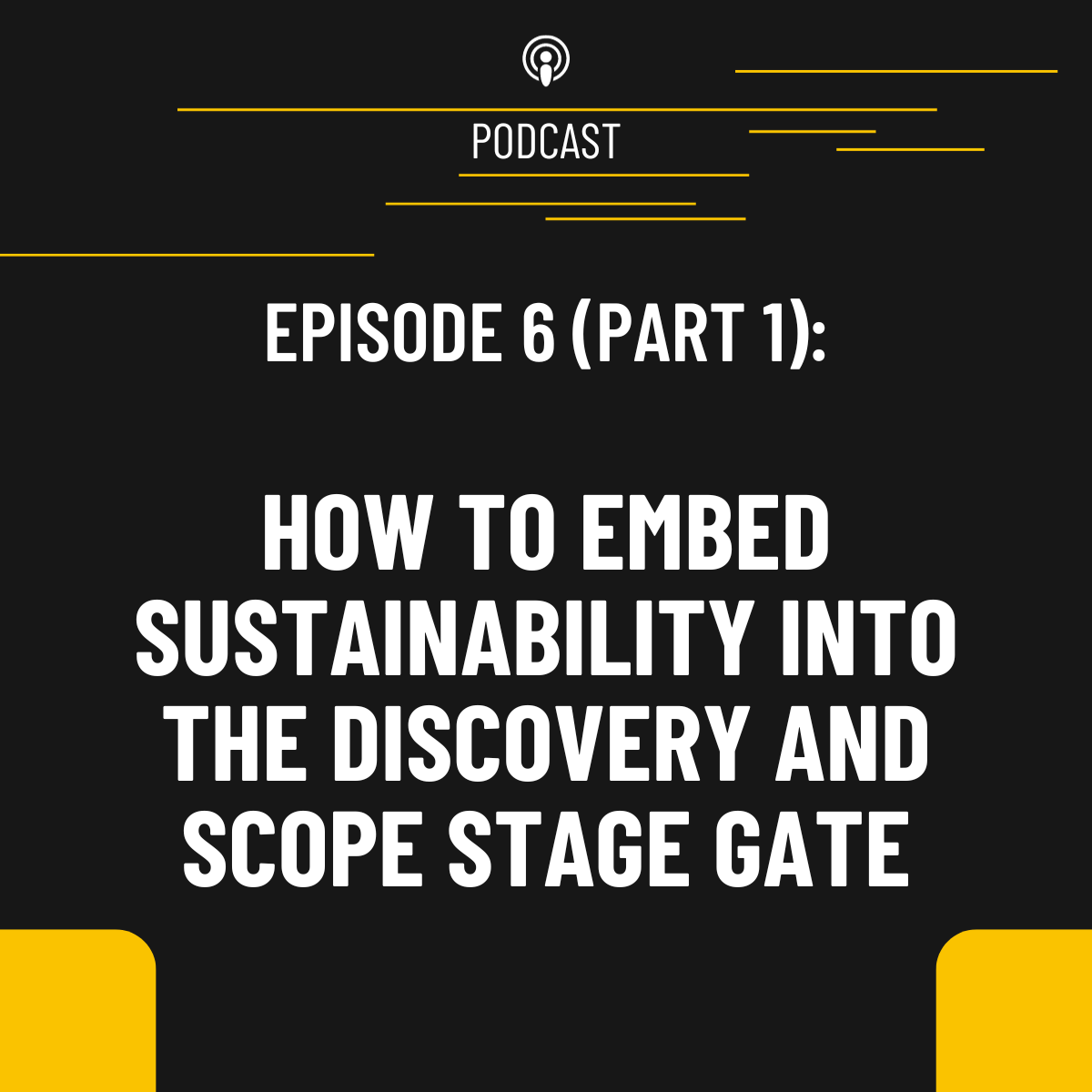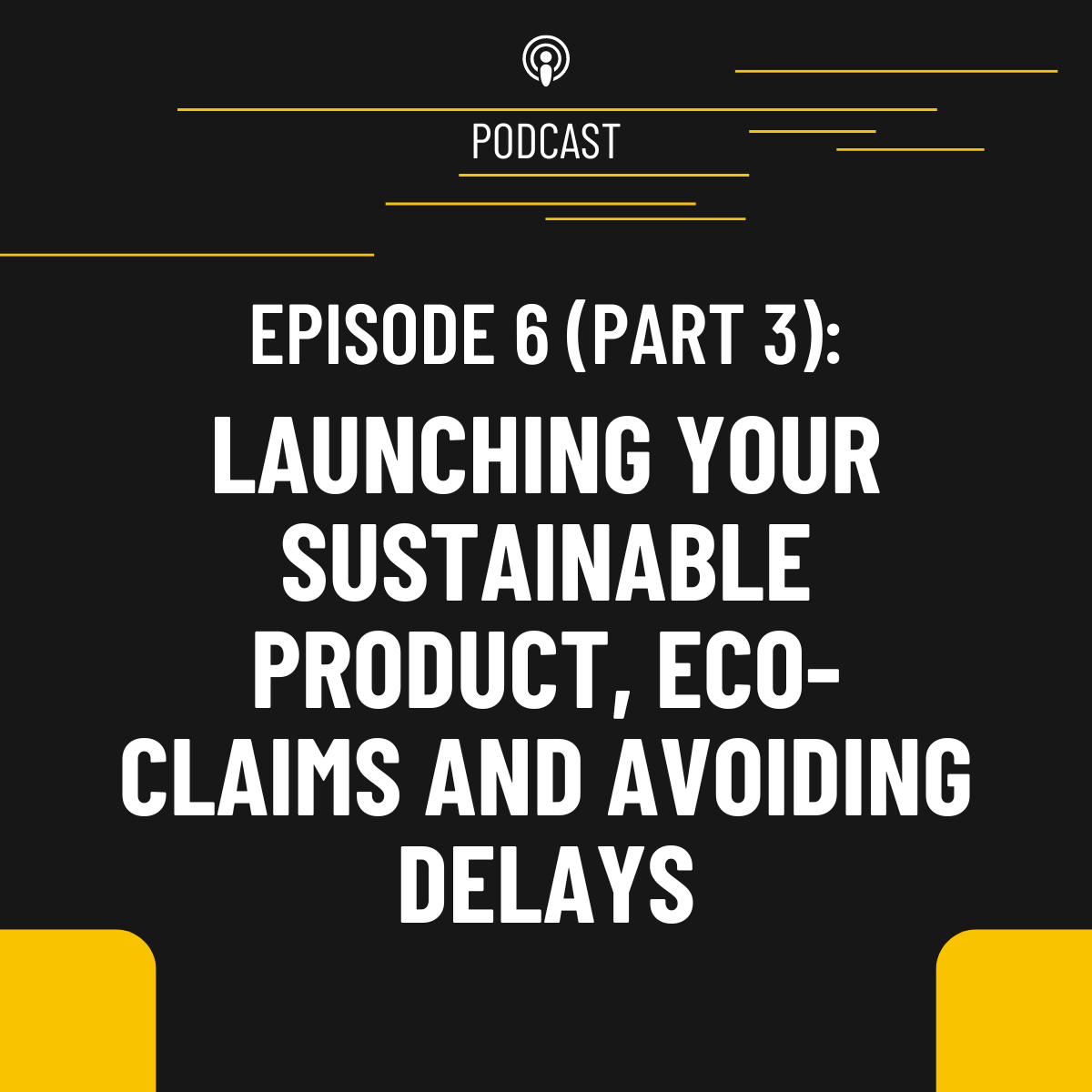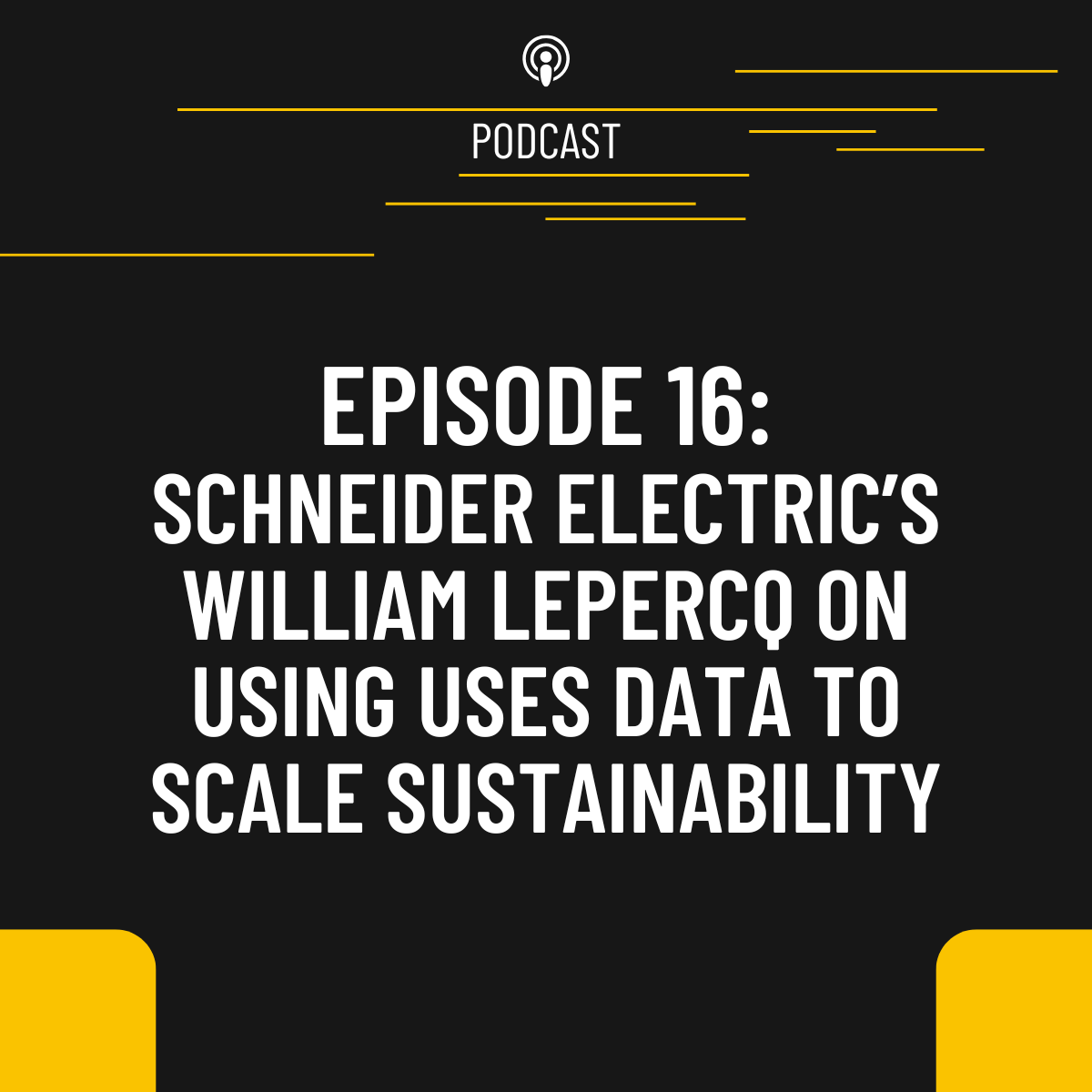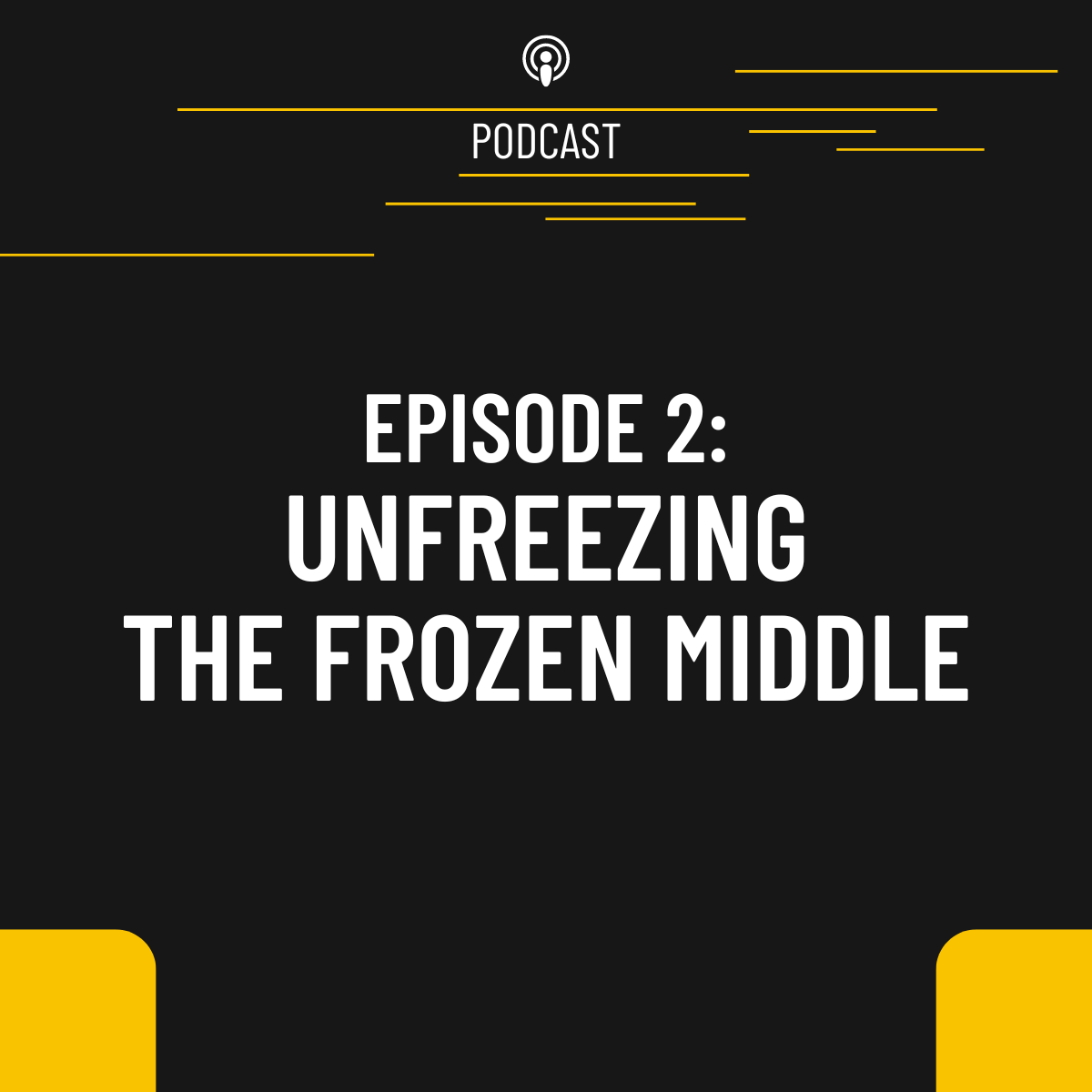Show Notes
In the second part of a three-part series on embedding sustainability into the stage gate process, Neil, Jim and Shelley discuss what comes next after the discovery and scoping phases. Is the proposal technically viable? Is there a valid market opportunity? Are you asking all the questions that need to be asked?
As the funnel narrows, it’s time to gather more information and more detail. Can you make a justification for what you’re proposing?
In this episode
What is unique about sustainability at the Business Case stage gate? What kind of trade offs might a product manager consider here?
- Neil: During this phase, you're building the case for the hypothesis that you've created in the Scoping stage. This would mean something like, can we make a battery for a car that would take it to 1000-kilometre range? [00:48]
- First check the viability from a technical perspective. Is this technically viable? What would it mean from a cost perspective? What would it mean from a risk perspective? After doing some preliminary exercises on potential benefits of this innovation during the scoping phase, what is the feasibility of this innovation? [01:20]
- On the other hand, what does this mean in terms of market? There are three things to typically look at. 1) Does it provide access to new markets? That is, can I reach customers that I couldn't reach before. 2) Can I win more customers? And 3) is profitability. Typically, sustainable products are associated with the high end of the market, where price premiums are more prevalent. Even though you start small with this innovation, you end up with much higher margins. [01:40]
- Look at the portfolio level too, if you want to improve the performance of the entire company. Because a lot of what you do is not just building new products, you sunset products that are no longer viable or not providing the business value to sustainability value ratios that are acceptable to the company. The idea here is to transition to something, you also need to transition out of something. BASF did interesting things in this space with their sustainability approach Triple S - Sustainable Solutions Steering. [02:25]
- Jim: The whole stage gate process is a funnel. At the top, you have a wide issue at discovery and scoping, then you narrow down the issues and hotspots. Using the automotive battery as an example, things like social responsibility of the suppliers; environmental issues associated with the extraction of cobalt and lithium; and the chemicals used. [03:14]
- Coming out of the business plan process, you've identified initial targets, like these hotspots but also the key goals - recognizing the corporate goals in these hotspot areas, including the goals the product team must meet before it gets to the Launch phase. [04:22]
- Another part of the business plan is to identify the key internal and external stakeholders, including who you will have to compete with or provide information to. You need to have them part of your team right at the beginning, not towards the end. [04:44]
- You lay the foundation in the first three stage gates with lifecycle thinking. Then in the Develop, then Test & Validate phase, you dive into more detail. And in the Launch phase even more detail. Because if you want to make a claim that uses lifecycle information, you need to have more information. There's a cascading level of complexity and a level of detail that you look at as you go through the process and bringing this together in the business plan is one of the most key parts of the whole stage gate process. [05:05]
- It's critical to deal with the end of life of any product earlier in the process. Decades ago, it was a linear process. You develop, sell, and then a product goes to landfill. Now you look at circularity and being able to reuse some of those materials. So, at the business plan phase, you need to identify who the internal and external stakeholders are to reach out to for the rest of the stage gate process? And if it's a hotspot, figure out who the trade associations are, who might be the material recovery companies in that area. It’s a very critical part that can't wait to the end. Many of our clients would wait to the end, then they have to do a study, which takes time because they didn’t think about it in advance. [05:45]
- Neil: This is the point where understanding the implications over the lifecycle of the product that you're building or the innovation that you're making is crucial, not just because these are hotspots, but now they need to be taken into account in a business plan. [06:45]
- The kind of materials you use will determine the amount of tax that you pay when you put this product on the market. The energy that this product consumes will determine what kind of rating you have with the energy star rating. These are implications to be accounted for in the business plan, just like end of life. With extended producer responsibility programs across Europe, and now even in the US, these are now part of the business case. It may make sense to spend more money during the manufacturing process with the materials that you use so that these costs can be mitigated as you move downstream in the development process, but also onto the market. [07:00]
- Jim: The expectations of the investor community, governments, customers, consumers, in the last five years has changed drastically. This is why the business case is critical and why stakeholder assessment is so critical at the beginning. Because your business plan is what you’re going to do, and you need to have external stakeholders be part of the team. It’s one of the things I don't think we've done as much of in the past, but in the last five years, the regulation and activity has accelerated. So, it's an important part of the business case. [07:48]
Shelley: Let's move on to the Develop phase and walk us through what happens from the Business Case to the develop phase. I know I've heard you say this is where the idea meets reality, and we end up putting resources into developing that idea. So, what shifts for the product manager here? What do they need to think about in terms of sustainability when they get to that stage? [08:35]
- Neil: The traditional approach to developing is trial and error. Even today, even in the largest companies. One thing that typically happens is there's an idea where you expect a synthesis into something real and you just don't find a way to get that done. Maybe its the wrong material, maybe the wrong process. [08:55]
- I'd like to combine this with the Test and Validate phase, which is the next step. Where you take this to the market and assess through market studies, customer studies, whether this is going to work. There are many ways to do this. You can use the Internet to test this with a broad number of customers and they will tell you what they like and what they’re willing to pay for it. [09:20]
- The Develop, Test & Validate phases are a cycling process and it's no longer only a question of does it work. There are other hypotheses developed during the early stages based on the hotspots that you found and its key to not stray too far from these hypotheses. [09:40]
- Here’s an example. A company that wanted to change their packaging from cardboard boxes to something more organic, recyclable, and reusable, to reduce the amount of impact. They started innovating and tried a different organic material, which couldn’t be form fed into a hard object, so then they made it a bag, which then needed to be redesigned to fit the product. They kept innovating to the point where they realized the final product just didn’t solve the problem of packaging because they couldn't stack it, the product would be damaged during transportation and so on. [10:06]
- It’s important not to forget what you were trying to test through the Develop, Test & Validate cycle. When things become too complicated, we simplify the problem into does it work? But the question is now broader than it was before. It’s not just across the lifecycle, but across these different criteria that we need to consider – e.g. end of life, how its used, impacts on logistics and transportation. Is it going to technically do the job? How expensive is it going to become? Is it going to be compliant? Will I be able to sell it in the markets? Will customers like it? And so on and so forth. [11:15]
- Jim: If you think about this funnel, it's getting narrower. There’s a pivotal point it goes through under Develop and Test & Validation, to dive down and answer some of the questions. Part of the questions are that some of your customers are concerned about the social behavior of your suppliers. You're going to have to work with your procurement to define what you are looking for. Maybe initially it's just a series of questions you ask your suppliers about what they're doing and how they're performing to get the information, which could use as a screening level. [11:44]
- When you think about the concept of LCA, you have some hotspots in the goal and scope definition, but in inventory, you dive down to get data and information. In this case, you may not need to get all the detailed data, but you need to build relationships with suppliers, so that coming out of the Launch phase you’ve set up a contractual relationship with your suppliers that say they must perform in such a way on social behavior or how they deal with the extraction of their material. You come out of the strategic plan and business plan with some concrete data and information that will allow you to develop goals as you go forward. [13:00]
- During a rapid prototype project a few years ago, we looked at lifecycle thinking at the beginning, lifecycle screening in the middle (which is where we are now), and if you're going to make an environmental claim about the product in the marketplace, you need a more definitive LCA to be able to justify that. So, this phase is in the middle where you're now trying to gather more information and detail and interacting with your suppliers. [13:50]
- The other side of the equation is what happens at the end of life. In terms of screening, you're reaching out to actual stakeholders that represent end of life. It could be recycling companies, reuse companies, that whole circular economy that people are beginning to do business in. Begin to reach out to them so that at Launch you can say you are going to engage with company A, B or C to help solve the recovery recycle problem when the life of this product passes its maturity in 10-15 years. Gather the data and information that will give you enough confidence to launch with the right message and the right stories. [14:20]
- Neil: I think that's an excellent plug for that last stage, which is Launch. All of this is a lot more work than what you would typically need to do to solve a technical problem. It's not easier and if you don't do it, there are consequences in terms of market access, profitability, win rates, the common things of what businesses really care about. [15:04]
- One of the most recent regulations is for anti greenwashing. You can't just claim this is green. You need to back this up and be specific in terms of what you mean by green. And if during this stage you've not done your work to quantify and collect this information so you can make those claims, the effort may not deliver the kind of success that you're looking for. It’s not just about developing the product, but also developing the evidence that you need to be able to make the claim that this is actually better. [15:30]
- Jim: The product manager’s goal is to have a product that's out in the marketplace, but there's a lot of accompanying information. It's the whole ecosystem around that product that's critical and you got to put all that together. [16:02]
Shelley: It sounds like there's a lot of overlap between the Develop and Test & Validate stage gate. Is there anything final and specific we can say about the Test & Validate stage that would be a salient for a product manager to know about? [16:24]
- Neil: Very often product managers, at least at large companies, are looking at an existing customer base where you understand the market and there's a product that you develop based on that understanding. But I think we're at this cusp where there's a whole generation that is going to enter the market as buyers in the next five years. The problem is there's very little understanding on what their preferences are beyond the fact that we know they prefer more sustainable products and are willing to pay more money for it. [16:39]
- In the Test & Validate stage, it's important to keep in mind that you're not designing a product to sell this year, but you're designing a platform that you will be selling over the next couple of years and the customers that you will have will be fundamentally different. Usually, these kinds of generational changes happen every decade and I think we're at that cusp now. [17:18]
- Jim: Using the battery as an example, to me it's testing and validating the life cycle of how long does it last. They do aging tests to evaluate durability requirements, charging and discharging efficiencies or even user experiences - how people used it in pilot projects - and then just long term product reliability. Based on what we talked about in the first four stages, this is when you got to have some data. You have to have data to justify your recommendations and changes that you're going to use to go to market. [17:37]
- Neil: There are things you need to consider when you're testing and validating in a more competitive, regulated, and less forgiving environment, which probably weren’t as critical in the past. It's no longer do you like it? and does it work? and would you pay money for it? But is it compliant? Which markets will I be able to sell it in? Were there significant changes from the initial hypothesis to the final design that would now limit my accessibility to market or win rate or the premium that customers would be willing to pay? I think if you're looking at compliance, is this going to get a certification? Is this a vetted supply chain? Does it embed risks, more long-term risks into the products’ viability for the future? [18:29]
- There are so many different things that make it way more complex to do this Test and Validation today than it was 15 years ago. You need to look at different tools to help do this and access the information that simplify the process and allow you to understand the trade offs during this phase. This is the multi criteria view. If I make this change, how much is it going to cost? Would I become noncompliant? Does it move me away from my initial hypothesis? These kind of trade offs need to happen a lot faster. And unfortunately, given the complexity of the environment that we're in, it's becoming slower. So, you need to switch this with smarter tools and more data. [19:25]
Links to things we talk about
- BASF’s Triple S - https://www.basf.com/global/en/who-we-are/sustainability/we-drive-sustainable-solutions/sustainable-solution-steering.html
Who’s talking?
To read about who you are listening to, visit fivelifestofifty.com and click on our bios.
We want to hear from you
Do you have a story about how you are using what you heard?
Is there a question you would like answered?
We want to know! Write to us at [email protected].
